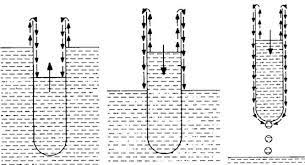I was delighted to hear of the award of the Nobel Prize in Physics for 2021. The committee continues to surprise us. I did not make any predictions this year, because I had nothing new to predict. I am still surprised that experimental tests of Bell inequalities (Aspect, Clauser, Zeilinger) have still not got a prize. Maybe next year.
Here I will just write about the award to Giorgio Parisi “for the discovery of the interplay of disorder and fluctuations in physical systems from atomic to planetary scales” as it involves condensed matter theory, beginning with spin glasses, and like many things with Phil Anderson!
The popular science background and the scientific background to the prize are worth reading, as always. It notes that in a Physics Today column Anderson wrote in 1988,
“The history of spin glass may be the best example I know of the dictum that a real scientific mystery is worth pursuing to the ends of the Earth for its own sake, independently of any obvious practical importance or intellectual glamour.”
This was in the first of a series of seven Reference Frame columns he wrote on spin glasses. The fifth column described the work of Parisi.
Here I will describe the basic ideas, particularly as they show that sometimes obscure basic science questions, very abstract ideas and mathematical formulations can be useful for very practical scientific questions, across a wide range of disciplines.
A spin glass is a distinct state of matter. This means, that in terms of the Landau paradigm, there must be an order parameter and an associated broken symmetry. What are they? Parisi found the answers.
First, as one usually does in theoretical condensed matter, one needs to write down a minimal model Hamiltonian that is complex enough to capture the essential physics but is simple enough to be amenable to analytical and/or computational analysis.
Sam Edwards and Anderson proposed the following model for a spin glass, and Ising model where the spins are on a regular lattice but the interaction between any pair of spins, J_ik, is a random Gaussian variable with zero mean and non-zero variance.
This means that the interspin interactions are equally likely to be ferromagnetic or antiferromagnetic, leading to significant frustration.
To solve such a model one needs to calculate the partition function Z for each realisation of the J's (disorder), calculate F=- T ln Z, and average over all the configurations of disorder.
Averaging Z over disorder is just a Gaussian integral, but averaging ln Z is analytically intractable.
Anderson's physical intuition was combined with the mathematical trickery of Edwards, that he had cultivated with his earlier work on quantum field theory and soft matter.
The replica trick is based on an identity that one learns in introductory calculus.
One considers not one system but rather n identical copies (replicas) of the physical system, calculates the average of the partition function for this fictional n-system, and then treats n as a continuous analytical variable and takes the limit that n goes to zero in the formula above. Wow, that is abstract! But, it is tractable.
Personal aside: more than twenty years ago I learned and used the replica trick because (like supersymmetry) as it provides a powerful mathematical tool to treat disorder exactly in one-dimensional models. But, the spin-glass case is much richer and more subtle.
Strange things happen for the spin glass. Soon after Edwards and Anderson's work, Thouless, Anderson, Palmer, and others made the rather puzzling discovery that not all the replicas were the same below the temperature associated with transition to the spin-glass state. The replica symmetry was broken in the spin-glass state.
Parisi proposed the order parameter below for this broken symmetry state. i denotes a lattice site, and the indices alpha and beta denote replicas. When alpha and beta have different values, the order parameter only becomes non-zero when the replicas are different.

Parisi, Toulouse, Mezard, and others then showed that there is a hierarchical structure associated with the order parameter leading to the concept of ultrametricity which can be associated with the rugged energy landscape of not just the spin-glass problem, but also optimisation problems, simulated annealing, protein folding, neural networks, ...
A nice overview that puts the theory of spin glasses in a much broader scientific context is Physics and Complexity by David Sherrington.
On Doug Natelson's blog, nanoscale views, there is a nice discussion in the comments about Parisi's Nobel and the subtle issue of the connections between separation of time scales and ultrametricity, and the connections (or not) between Parisi and climate science.










